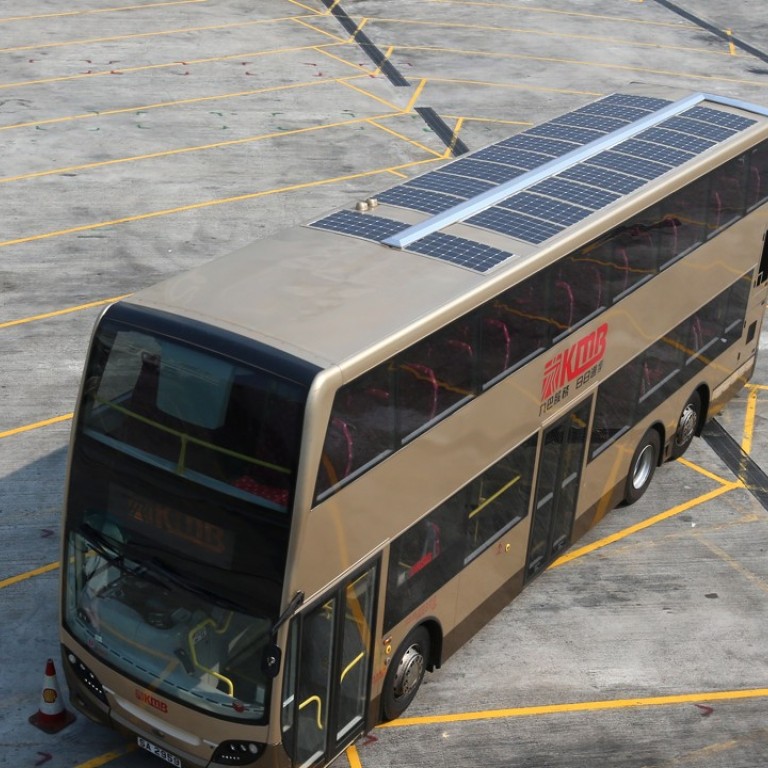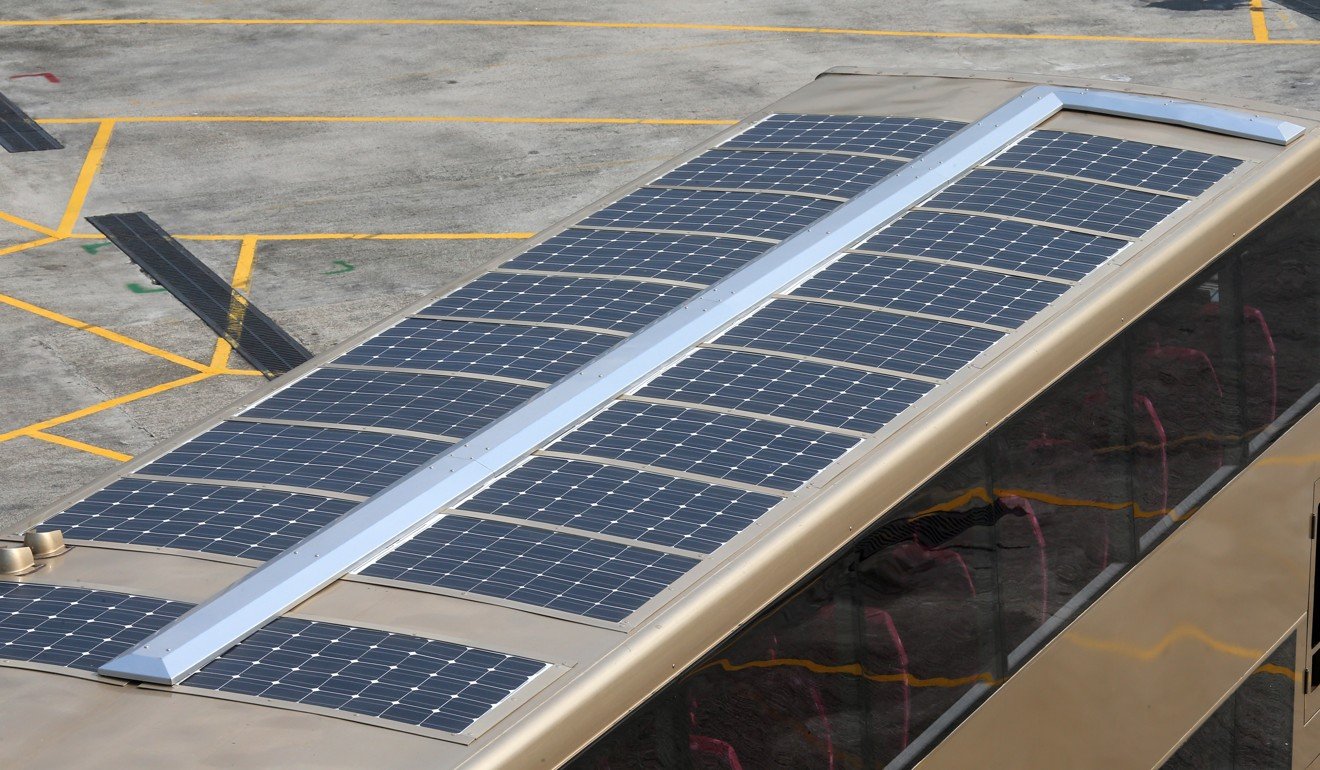
Hong Kong’s KMB unveils bus with solar panels to power system that cools air in parked vehicle
Technology was developed in-house and will see energy savings for air conditioning
A Hong Kong bus company is set to use solar panels on double-deckers to power a ventilation system, in a bid to be environmentally friendly and reduce emissions.
KMB, which services 2.8 million rides a day, is the first bus company in the city to use the method as an additional power source.
KMB has installed 20 panels on the roof of one of its buses. The vehicle passed a trial conducted at a depot in Sha Tin in the New Territories, and will be in service this week on Tuen Mun routes.
The panels work by converting energy from the sun into electricity for a system that can cool the bus down by five to 10 degrees Celsius while the vehicle is parked at a depot or bus stop.

Once the engine is switched on, less time is then needed for the air-conditioning system to kick in and further bring down temperatures to a comfortable level, reducing emissions and energy wastage.
“KMB is the first company in Hong Kong to incorporate solar technology on a double-decker. We hope this innovation will improve our service quality, represent an efficient use of recycled energy and demonstrate our care for the environment”, Lo Chun-yi, one of the engineers from KMB’s service department, said.
Long-suffering bus drivers finally get rest kiosk at terminal in East Kowloon
KMB has a 4,000-strong fleet, and the company is hoping to gradually add panels to other double-deckers, according to Lo, who also confirmed that the system remained efficient even in hazy conditions.
The idea was developed by a team of KMB in-house engineers, who spent four months working on the system, which has since been approved by the Transport Department.
KMB has applied for a patent, which is pending. The company could not confirm how much the system would cost.
The upgrade would also supply power to on board USB ports for the charging of mobile devices while the engine is running.
Only some KMB buses currently have the USB feature, but the company aims to complete installation on at least half of its fleet by the end of the year, according to a spokesman.
In 2007, Australia developed the world’s first ever 100 per cent solar-powered bus which drew energy from Adelaide’s central bus station.

